Jeff Goulding is a Liverpool fan and author with many tales to tell. We sat down with the lifelong Red for a chat about all things LFC.
Goulding is a lifelong supporter who has witnessed all the unrivalled highs and crushing lows over the years.
His excellent new book, Red Odyssey: Liverpool FC 1892-2017, selects 125 standout moments from the club’s great history and is perfect for a fan of any age.
Whether it be tales from Liverpool’s earliest years, the birth of the Kop, examples of Bill Shankly‘s genius or an up-and-down period during the 21st century, all bases are covered.
We spoke to Jeff about his book, his life following the Reds and plenty more.
You grew up within walking distance of the Kop – what are your earliest memories of supporting Liverpool?

I remember my mum and dad talking to me a lot about Liverpool when I was very young. They were big fans and my mum loved Ian St John and Roger Hunt. Before she married my dad, she had pictures of them on her bedroom wall. They both went to the game and idolised Bill Shankly.
There’s a couple very early memories that cemented my affection for the club though. The first is the 1974 FA Cup final against Newcastle. We didn’t go, but I remember watching it on TV. I’d have been 6 years old. I say I was watching it, but I was really watching them, their behaviour and reactions.
The site of my mum, dad, aunts and uncles jumping up and down and screaming at the telly was incredible. I couldn’t help but join in. From that moment on, I was hooked.
My next memory is my first game. It was 1976, I think. The game was against West Ham. I know now it was 2-2, but I couldn’t tell you a thing about the game itself. I was in the Paddock (Main Stand) with my Dad and my uncle. I spent the whole match watching the Kop. The sights and sounds were magical.
The way the crowd moved, the sound of their songs and the sheer number of people in one place blew me away. I felt ten feet tall and part of something special and much bigger than myself. I remember walking home and listening to my dad and my uncle chatting to complete strangers and dissecting the game in intricate detail.
I thought right then and there that if I could spend every day watching Liverpool at Anfield, that would suit me just fine.
Then there’s the homecomings, so many of them. Throughout the 70s it felt like this was annual event in the city, as regular and predictable as Christmas. The whole family would stand on Queens Drive every year and wave and cheer like lunatics as the team bus went by laden with silver.
How much has the club changed since those days? You have spoken quite candidly about how you fell out of love with it for a while.
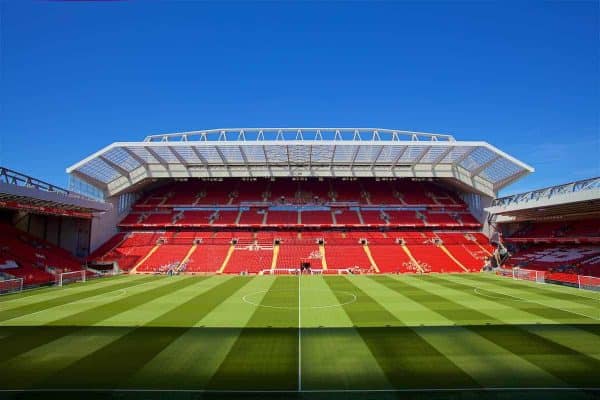
The club and Anfield are almost unrecognisable to the one I fell in love with as a kid. Of course, there’s the obvious changes to the infrastructure. Anfield was an austere and unwelcoming stadium back in the 70s. Its huge brick walls and narrow turnstiles are a far cry from the modern facilities we see today.
The Kop too could be an uncomfortable place to stand as a kid. You’d be buffeted around for 90 minutes and come out of there with your jeans soaking wet. You wouldn’t know it until the cool air outside hit your legs, but often you’d leave the game realising someone had peed all over the back of your legs. I kid you not.
By full time, the people down the front, behind the goal, would be wading through a small river of piss. The place would be so packed, you couldn’t get near a toilet during the game, so people would just relive themselves where they stood, usually through a rolled-up newspaper. It was barbaric, but it became a normal part of the match going experience.
There were times when it didn’t feel safe either. On a few occasions, when I was pressed up against a crash barrier, I would actually be scared watching the game. I don’t miss that, and I wouldn’t want to go back to those conditions. We were treated like cattle back then.
Having said that, I believe we’ve thrown the baby out with the bath water. Anfield now is a modern stadium with everything that goes with that. However, it has lost some of its soul. The raw and chaotic nature of going the match in the 70s and 80s, for all its primitive qualities, was something special.
It bred a supporter culture that was unrivalled anywhere in football. The songs and banners that inspired generations down the years, were forged in that old Anfield cauldron. It wasn’t just the Kop either. There was also the bear-pit that was the Anfield Road end.
Back then, the Kop and the Anfield Road end had a rivalry. The Anny Road, as we called them, were among the first to sing “Kopites are Gobshites” and they saw themselves as every bit as special as their bigger and more famous counterparts.
I remember my dad telling me about a game that should never have gone ahead. It was so foggy, you could only see as far as the halfway line. At one point the crowd started singing “Road end, Road end, what’s the score?” The two ends of the ground used to taunt each other and communicate during the game.
There were so many occasions that summed up the sense of togetherness and community. Many are hilarious, and others are just silly and entirely of their time.
Whenever the team was struggling we used to sing “Attack, attack, attack, attack, attack!” You’d see it would get to the players and the team would respond. It worked so often, we used to see it as our responsibility when things weren’t going well.
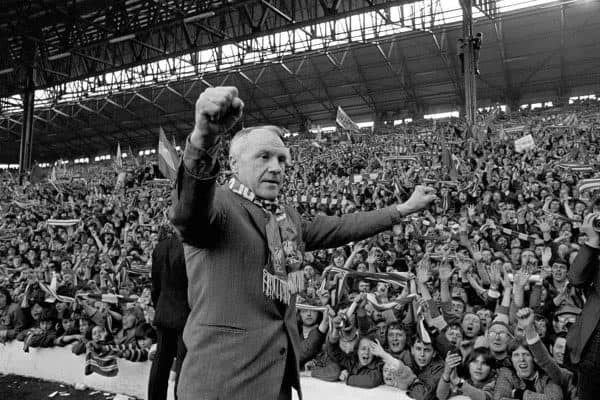
I remember being at one game, when a cat ran on the pitch. In an instant the Kop started singing as one, “A cat, a cat, a cat, a cat, a cat”. It was like some hive mind was at work and everyone started singing it at the same time.
Then there were the big European nights. I’d be wedged into the middle of the Kop with my mates, between the huge posts that held the roof up. That’s where you wanted to be, and where all the singing started. It would be so hot and cramped, but you loved it and the noise was terrific.
I remember during one game, looked out across the Kop in the middle of the match. It just took my breath away. The sight of that huge mass of people in one place and all wanting the same thing was awe inspiring. Then, I saw what looked like a giant plume of smoke rising up above the heads of the supporters.
This was no flare or smoke bomb, it was the evaporating sweat (and possibly worse) of tens of thousands of people, crammed in like sardines in a tin. Some of the greatest football experiences of my life were spent with that heaving mass of supporters in the greatest stand on the planet.
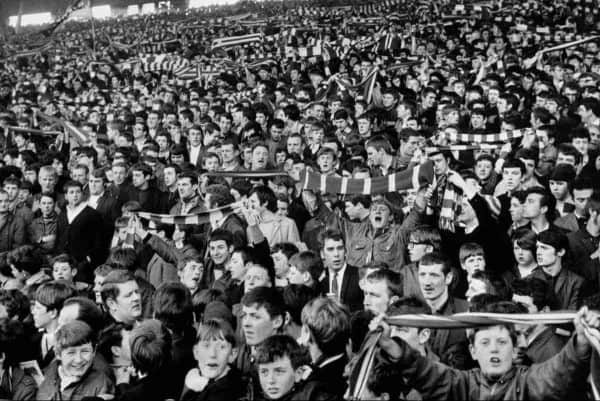
We had traditions that I think should be revived and preserved too. We used to sing a song for every player during the warm up. We’d go through the full team, and each one would salute us as we got to their song. Clapping the opposition keeper as he made his way into the Kop goal is another that has survived to this day. The rule was, if he didn’t respond in kind you gave him a dog’s life.
It could also be a harsh environment. Songs and banners were subjected to fierce judgement. If people thought the song you were trying to get going was crap, they wouldn’t be shy about letting you know. This was Darwinian natural selection at its cruellest sometimes, but it helped make the Kop the envy of the footballing world.
So, in appraising where we are now, I feel we need to find a middle ground, between the raw working-class culture of the 60s, 70s and 80s and providing supporters with a safe and comfortable environment to watch the game.
The club needs to think more about how it can balance the need to make money, with its ability to rekindle and nurture that unique and sometimes irreverent atmosphere. There’s no need to be afraid of it or try to sanitise it, let it grow organically like it used to.
The cynicism of my middle age is really a result of the club, in my view, getting that balance wrong for a long time. The fact that Jurgen Klopp has had to come in and tried to get it going again tells its own story. I feel it’s coming back slowly and last season really reminded me of the old days in many respects.
I’ve rediscovered my love for Liverpool. It never really left me, I just started to feel we’d lost some of the magic. Writing the book has helped me to rediscover all those old feelings and reminded me why I support Liverpool in the first place. I think others will too.
As a local, what is your stance on the ‘locals vs. out of towners’ discussion?
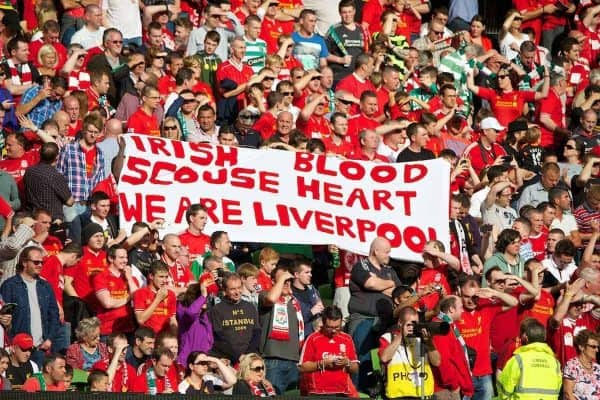
To be honest, it gets on my nerves. It’s been going on for so long and I see so much hysteria and misunderstandings on both sides.
I am a Scouser, I have lived here for 50 years and I can say honestly that I couldn’t care less where you’re from. If you support the Reds, then that’s good enough for me.
If you’re from Liverpool, then it’s likely that your ancestry hails from all four corners of the globe. My grandparents on both sides are Irish, like so many in the city. We are a mish-mash of different races, religions, cultures and nationalities. I think that’s what makes Liverpool so special.
Our accent would be Lancastrian if it wasn’t for the influx of other voices and cultures. The dish that gives us our name, Scouse, is from Northern Europe, most likely Scandinavia. The Beatles were influenced by records they bought from American sailors docked at the Port of Liverpool, and our greatest stories are of adventures across Europe.
If you argue that you have to be Scouse to support Liverpool, then you have to tell me what Scouse is. As I understand it, to be a Scouser is to be a citizen of the world. We look out across the Atlantic, not inwardly towards petty and small-minded ideas.
People arriving from outside to enrich our community is what this city is all about. It should be what the club is all about too. It was that international community that built Liverpool Football Club into what it is today.
It’s not the case that we would be nothing if it wasn’t for today’s global support. It’s more the case that city wouldn’t be what it is today, without people from across the world settling here and helping to create the special community we have now.
So lecturing Scousers that we couldn’t survive if only Scousers supported the club is missing the point. Our community has always been global, from the outset. Liverpool in 1892 was all nations, all cultures and all religions living in one place. It still is.
That said, one of the issues some elements of our ‘out of town’ support fail to grasp is that Liverpool has a strong sense of identity. That’s not in my view about feeling superior to others, although I accept some do. It’s about celebrating the uniqueness of our culture and wanting to preserve it.
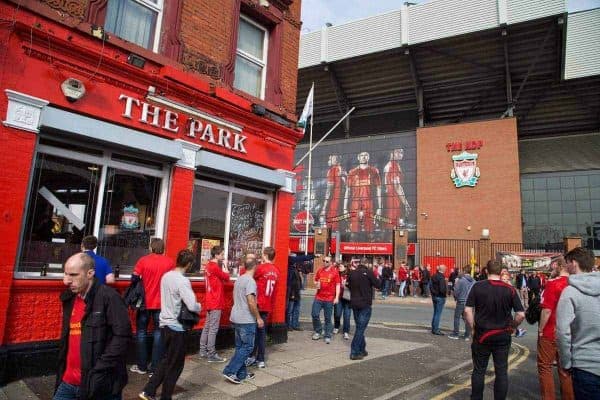
The whole ‘Scouse not English’ thing has its roots in that mentality. It’s always been there. As far back as the 19th century, Liverpool saw itself as different. However, that feeling hardened and solidified in the 1980s. The Thatcher government helped to cement the idea that we were not like other English cities and had our own outlook.
Of course, Scousers are not one homogeneous group. We have differing opinions and views of the world. Go to any workplace canteen or Scouse wedding and you’ll see we love to argue, even with each other.
However, broadly speaking Liverpool people are passionately anti-establishment. They hate being lectured to by anyone, but don’t mind dishing out a lecture or two, where we think it’s needed. We stick together and value ideas like solidarity.
Scousers also tend to reject cliche or stuff that feels manufactured or fake. We’re not perfect, of course we’re not. But, we are proud of who we are regardless. I am proud to be Scouse, even though intellectually I can see that where you are born should really be irrelevant.
It really does matter to me. It has shaped my attitudes, beliefs and values, my sense of who I am. This place is special.
So, all I would say to our ‘out of town’ support is try to understand our culture. You don’t have to agree with us or share how we feel, just understand where we are coming from. When some Scousers say they don’t care about the England national team, that’s not them attempting to say they’re a better Liverpool fan than you, it’s because they see themselves as Scouse not English.
If someone says your song or banner isn’t Scouse, they probably mean it’s unoriginal or cliche, in their opinion. When they don’t like your jester hat or half-and-half scarf, well that’s because they think it’s fake manufactured football culture and most Scousers aren’t into that.
So, as a Scouse internationalist and socialist, I don’t care if you’re from Kent or Kensington, Adelaide or Anfield, Norris Green or Norway. If you support the Reds because you grew up in Liverpool that’s great. If you support them for some other reason, that’s fine too.
We can’t all get to the game, there just isn’t enough room. However, if you are lucky enough to be at Anfield on a match day, remember the community that built the club you love, understand its traditions, add your own to it and support the men in red as vocally and loudly as you can.
That’s the Liverpool Way. That’s Scouse.
Your book takes a fascinating look at Liverpool’s 125-year history – what urged you to write it?
I have had an ambition to write a book for many years now. I got the idea to do one about the Reds, after writing the classic match features for This is Anfield.
My research for those articles produced so many stories and characters that were new to me. With the anniversary of the club looming the urge to bring these all together became overwhelming. I wanted to bring to life the old heroes and stories that have shaped the history of the club.
There were so many tales, it became a real task trying to identify what should go in and what to leave out. I must thank Matt Ladson, editor of TIA, for his support in putting together the final list of 125, as well as Pitch Publishing for putting their faith in me.
In the end I think I’ve captured the essence of our history and the thing that drives our love of the club – its stories. You won’t have to work too hard to enjoy the book. You can start in the middle if you want, with your favourite period or you can read it from cover to cover.
Each story is short enough to enjoy on its own, but once you start, you won’t want to put it down. I hope reading it is as enjoyable as writing it was.
Some of the stories during the very early years of the club are particularly interesting – which ones caught your attention the most?

Oh, I love the earliest stories. That’s where all the discoveries where for me. The story of the first Liverpool vs. Everton game is brilliant and shows how the rivalry has been fierce from the very beginning.
I also loved the tale about our first FA Cup final. We lost but the behaviour of the supporters at Lime Street, in 1914, is eerily like today’s supporters on away days. I love that. No matter how many years stand between us and our ancestors, we are essentially the same.
The team of the 1920s also caught my attention. They won back-to-back titles and were clearly an impressive outfit. I loved that the media called them the ‘untouchables’. Then there’s the great legends, whose names should be more widely celebrated; Elisha Scott, Tom Bromilow, Alex Raisbeck and Gordon Hodgson. These men were like gods to the supporters, but we only celebrate the heroes of the 1960s and beyond.
I hope that people who read the book will see that Shankly’s men were standing on the shoulders of giants. Today’s Kopites are too.
Is there a specific period in Reds history that you believe is the most special?
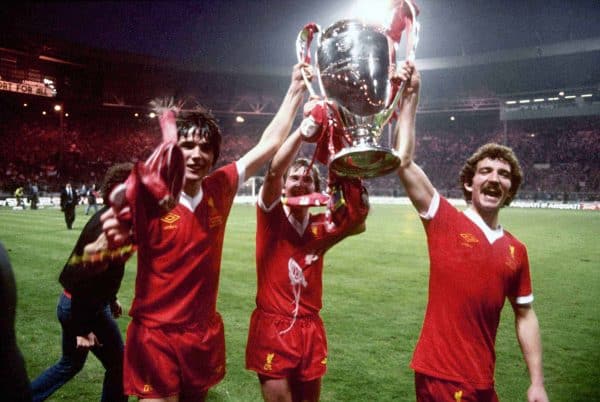
Can I say all of them? No, I can’t obviously.
The early formative years are fascinating and the 60s are iconic for so many reasons. The 80s are tinged with sadness but were also some of the most exciting in our history, and of course the noughties saw us come out of the shadow of the 90s.
However, for all of that, you’d have to go a long way to match the glory of the 70s. Maybe it’s just because that’s the period when I got my football education, but that decade was simply spellbinding.
We won league titles and trophies both domestic and European. We were the best team on the planet bar none. Bob Paisley and Shankly, Kevin Keegan and Kenny Dalglish, Terry McDermott and Steve Heighway – those were the days my friend.
Of the 125 stories told in the book, which ones do you hold closest to your heart?

In the foreword and introduction, I talk of my earliest memories of going to the game. I’m pleased with the way they came out, because I’ve had messages from readers who’ve said they were moved to tears.
My experiences resonated powerfully with their own memories, and that’s what I set out to do. This is a people’s history, after all.
My own eye-witness account of the 7-0 against Tottenham, in 1978, also gives me a lot of pleasure. I still get goosebumps when I read it.
It takes me right back to that day and all the old feelings come flooding back.
As a lifelong Anfield goer, what are top three games you’ve ever seen there?
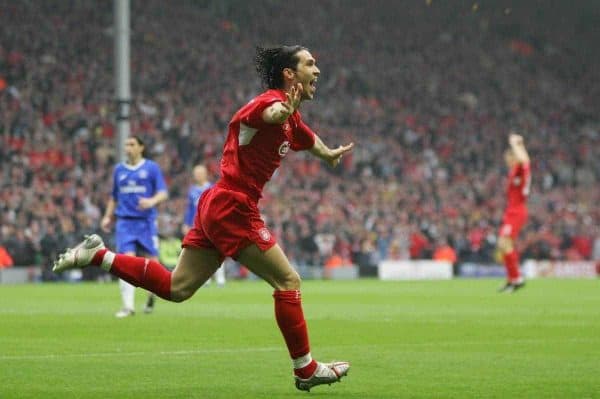
Okay, here goes…
Spurs at Anfield in 1978: The score was 7-0 to the Reds, the sun was shining and I saw the greatest goal ever scored at Anfield. Heighway’s pass and McDermott’s powerful header into the net was a thing of beauty.
The 5-0 against Nottingham Forest in the late 80s: They were weirdly a big rival back then. Before the game we were all expecting a tough fixture. What we got was one of the most amazing demolition jobs I have ever seen.
Chelsea at Anfield in the semi-final of the Champions League in 2005: The noise and atmosphere in that game was remarkable. The result was too, for the obvious reasons.
It was the feeling inside the ground that night that stands out, though. It was, for my son’s generation, their St Etienne and there was a real feeling if resurgence and a sense that we were back. The Kop rolled back the years and it’s one of the best atmospheres of my life.
And what about the current Liverpool? Happy with where they’re going under Jurgen Klopp?
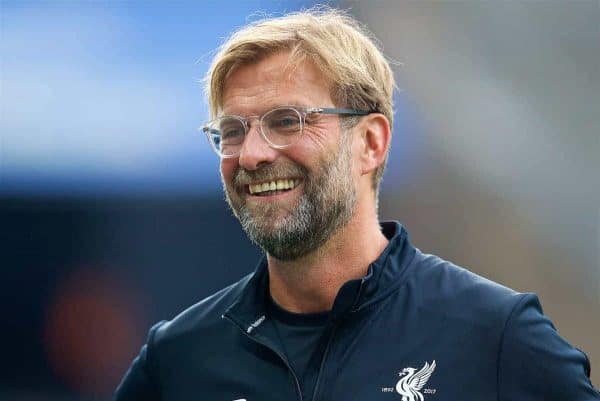
Definitely. In Klopp, I think we have once again found a perfect fit, not just in terms of style of play and attitude to football, but in terms of his outlook on life.
Klopp is anti-cliche, a complete one off and, in that sense, he will always be entirely in tune with the people of Liverpool. Even Evertonians grudgingly respect and like him.
The progress is there for all to see. We are light years from where we were when he took over, in my view. That’s no disrespect to Brendan Rodgers, by the way, I just think Jurgen is on another level. You can be hypercritical and say he’s won nothing yet, but that’s missing the point.
He’s overachieved. None of us expected to be in three cup finals in three years with our squad when he took over and I feel he’s building us into something special again. The next stage is crucial of course, and winning finals and league titles is the hardest step to take, but I genuinely feel like he’s assembling a squad of players capable of doing it, and soon.
Whatever happens, it’s going to be a wild ride, with many more tales to tell. That suits me.
Where would you rate them among the best Reds teams you’ve seen?
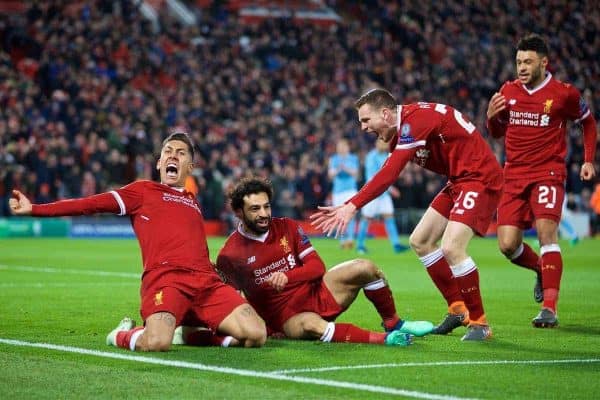
Well, they nowhere near the teams of the 70s and 80s yet. Those sides won everything and did it year after year. They were a machine and I used to go to games utterly convinced we would win. If you lost, you weren’t angry as such, you were bemused.
I’d say, “how the hell did that happen?” I’d get over it quickly, because we usually won the next game. Even on the rare occasions when we went on a bad run, I always had faith we’d come out of it.
That’s the task for the current crop. Last season they were brilliant and at times they were unplayable. However, to be a great team they have to repeat that week in week out and do it season after season. They can do it, and I have faith that Klopp will get us there. I am a believer.
I see this Liverpool team as being like the one in the 60s. Klopp, like Shankly, took over a club that was struggling to find its identity. The supporters were becoming frustrated and envious of their rivals. ‘Shanks’ had to contend with Everton as the more successful outfit – Klopp has Man City, Chelsea and Man United.
Just like the great Scot before him, Klopp has set about turning the Kop into believers once more. He has instilled a firm sense that we should fear nobody and told us that there are enough riches for us in the future that we don’t need to always look to the past, as glorious as that is.
He is his own man, of course, but I can’t help but see the parallels with Shanks. He has the charisma and the vision and when he speaks people listen. His politics are similar too. Above all, I think he gets Liverpool, the club and the city.
I’ve spoken to a lot of Reds who went the game in the 60s, and they say that same sense of optimism and belief that characterised the Shankly era is back. I guess the lesson of the 60s is one of patience, and that worries me. Modern football is anything but patient.
Shankly went six years without winning anything as he rebuilt the team that had won the FA Cup in 65 and the league title in 66. The supporters gave him time and were rewarded. I hope today’s supporters can be as educated and well-informed as their predecessors.
And finally, what next for Jeff Goulding? Anything in the pipeline?
Well, I’m really excited to say that I have another book coming out on October 22nd. It’s quite ambitious and combines my love of telling stories with my love of football and the city of Liverpool.
The book, Stanley Park Story: Life, Love and the Merseyside Derby, is a novel set against the backdrop of the longest continuous running derby in English football. It tells the story of the fixture through the eyes of three generations of two families, one Red and one Blue.
I have spoken to both sets of supporters in researching the book and delved into the archives. I think I’ve produced something that is authentic, informative and ultimately entertaining. It’s a mix of fact, fiction and personal experience that, I believe, is different than any other football book I’ve read.
I’ve tried to give the reader everything; football, drama, comedy, tragedy and recovery. It’s a story of rivalry and solidarity or love and sadly hate. It is also, I hope, an uplifting story and it’s my honest hope that it will appeal to both Reds and Blues, as well as anyone interested in the history of football.
After that, I think I’ll have a rest on the book front. However, I’ll continue to write for This is Anfield and look forward to chronicling the season ahead.
Up the Reds.
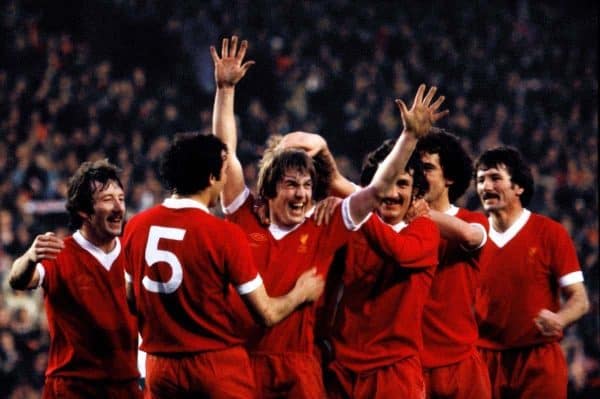



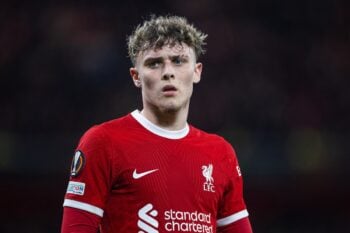
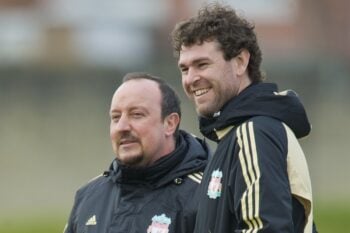

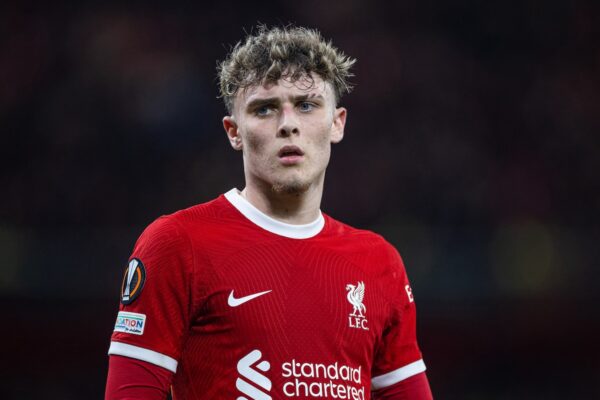
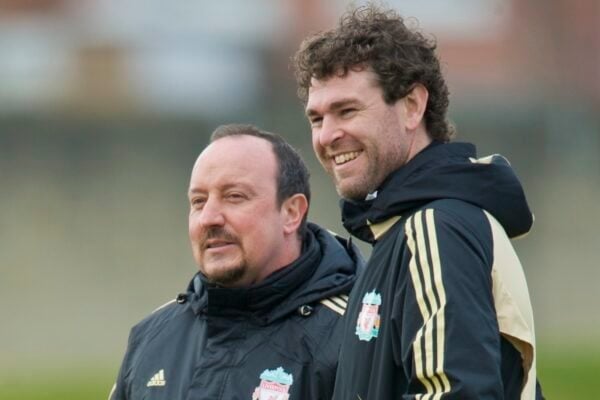
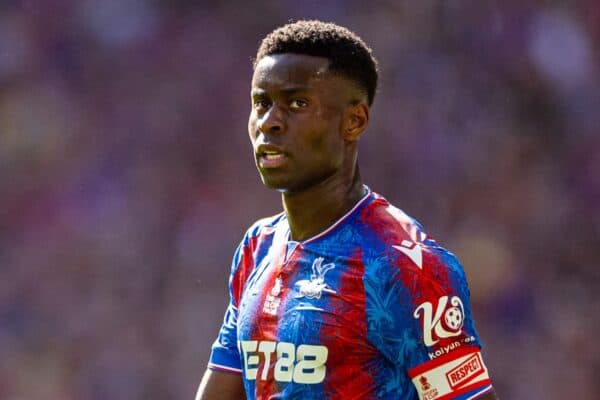
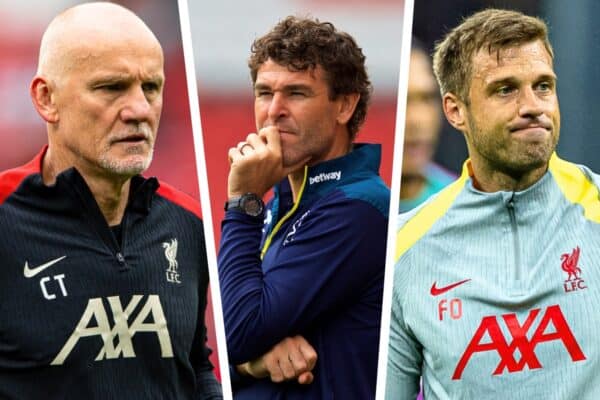
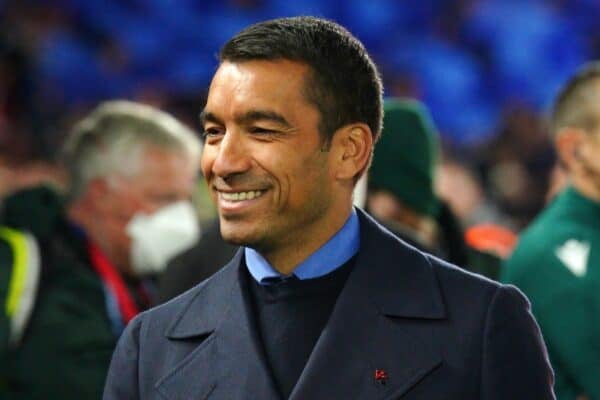
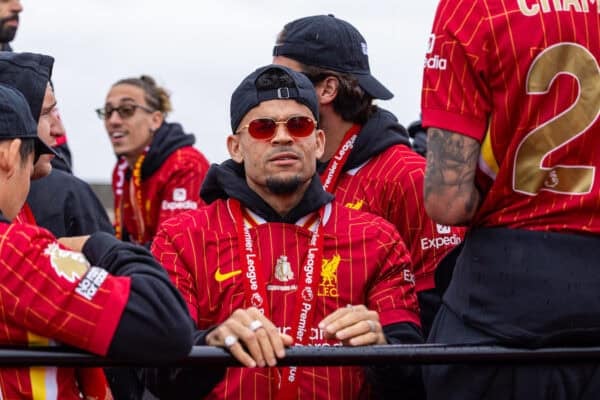
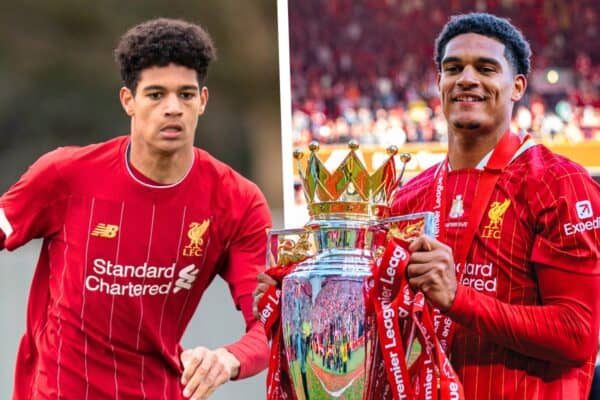
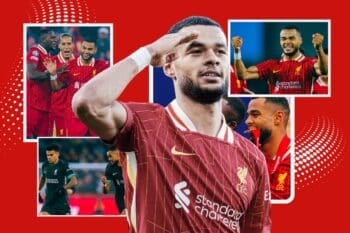


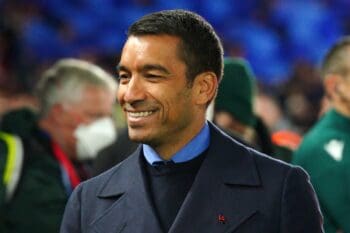
Fan Comments